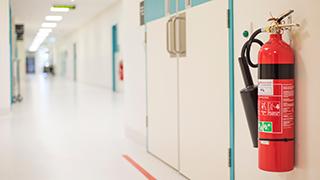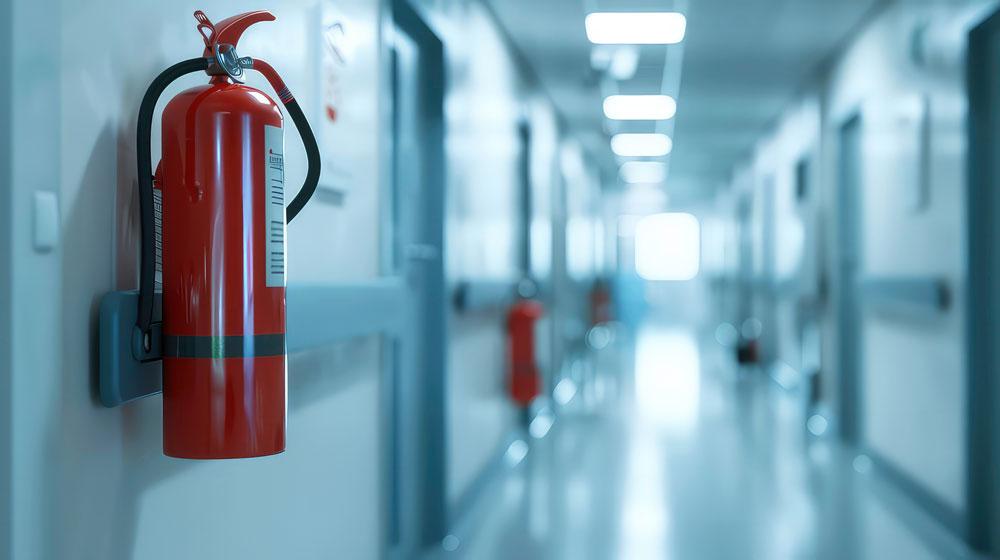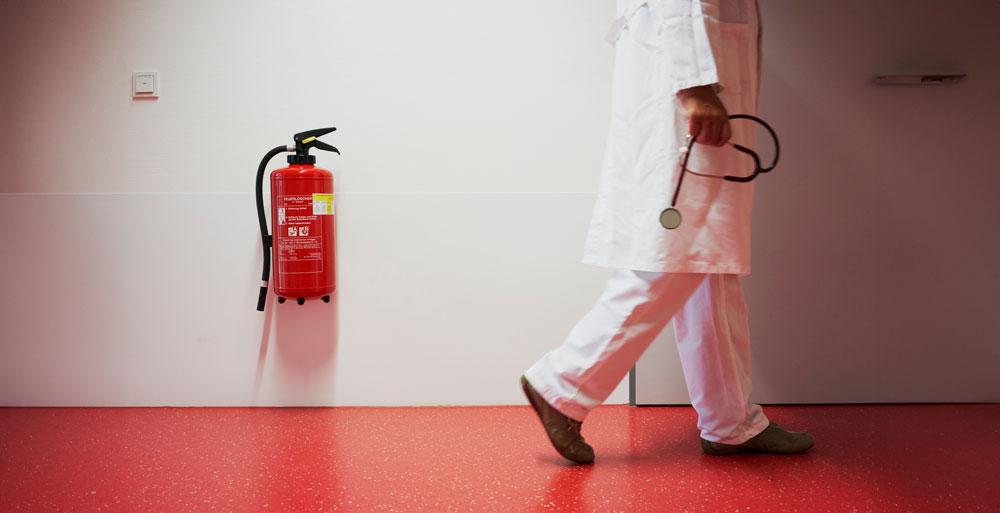Will Lloyd, technical manager at the Fire Industry Association discusses the importance of fire safety in hospitals
Effective fire safety in any environment depends on a combination of physical fire precautions and a robust system of effective management. Fire safety in the healthcare environment is particularly challenging, since many healthcare building occupants will require some degree of assistance from trained staff to ensure their safety in the event of a fire evacuation.
Even in primary care environments, the proportion of building occupants that may require some assistance to quickly escape the effects of a fire is likely to be greater than that which would be expected from a cross-section of the general population.
While physical fire precautions within a building are intended to provide protection to building occupants, effective fire safety management ensures that the incidence of fire is minimised, the physical fire precautions are maintained in an operational state, the organisation is able to respond effectively should a fire occur, and that the impact of a fire incident is minimised.
Legislation
The current legislation in the form of the Regulatory Reform (Fire Safety) Order 2005 (equivalent legislation applies in Scotland and Northern Ireland) requires a managed risk approach to fire safety. The process of fire risk assessment, mitigation and review requires a robust system of management capable of identifying hazards, qualifying their impact, devising appropriate mitigation, and continual monitoring.
The presence of a robust system of fire safety management is a key influence in fire risk assessment and in many healthcare environments it is the determining factor in evaluating the level of fire risk.
The increasing prevalence of building fire strategies for healthcare premises which contain fire-engineered design solutions, are likely to intensify the need for enhanced fire safety management. These solutions may require enhanced fire safety management procedures to be applied holistically or simply as a specific component of a fire-engineered solution.
Risk mitigation
In a healthcare environment with very high dependency patients, it is unlikely that any amount of physical fire precautions on their own can reduce fire risks to an acceptable level. Adequate risk mitigation can only be achieved with the provision of a sufficient number of suitably trained staff, an environment in which the fire precautions are well maintained, and effective emergency action plans that have been sufficiently rehearsed. It is the non-physical elements of these fire precautions that are provided as a function of fire safety management.
False alarms
Another way to significantly improve fire safety in hospitals and other healthcare facilities is to minimise the number of false alarms and unwanted fire alarm signals (UFAS). An UFAS is a false alarm from an automatic fire detection and fire alarm system that has been passed on to the fire and rescue service. For example, a typical cause of a false alarm in a hospital/care setting might be from the burning of toast (the NHS runs on toast). Instances of UFAS impact upon the treatment and care of patients and can result in the loss of appointments, disruption to care and treatment regimes, and can significantly affect staff morale. In addition to this, unwanted fire alarm signals have a serious impact on the fire and rescue service, diverting firefighters from other genuine emergencies and potentially life-saving activity.
In order to identify incidents of false alarms correctly, it is necessary to define the sources of fire detection and alarm system activations.
The causes of fire detection and alarm system activations can be broadly classed as one of two incident types: fire; or false alarm. These incidents can be defined as follows: Fire – a fire can be regarded as an incident resulting in the uncontrolled emission of heat and/or smoke or false alarm – activation of the fire detection and alarm system resulting from a cause other than fire.
In accordance with the National Fire Chiefs Council (NFCC) policy, a false alarm becomes an unwanted fire signal at the point the fire-and-rescue service is requested to attend.
The false alarms may be subdivided into four categories as defined in BS 5839. Firstly, equipment false alarms, in which the false alarm has resulted from a fault in the system. The most serious of the categories as well as the one where fast action can bring significant improvement to fire safety is an alarm caused by faulty equipment. Reducing false alarms begins when designing the equipment.
Article 18 of the Regulatory Reform (Fire Safety) Order 2005 (RRO) requires the Responsible Person to ‘appoint one or more competent persons to assist in undertaking the preventive and protective measures’. Where the protective measures include a fire alarm and fire detection system, a proper service and maintenance programme is essential to ensure the fire alarm and detection system works when it is needed most.
British Standards recommend that the number of service visits per annum should be a minimum of twice a year (with the actual number dictated by a suitable and sufficient risk assessment).
Secondly, unwanted alarms, in which a system has responded, either as designed or as the technology may reasonably be expected to respond, to any of the following: (i) a fire-like phenomenon or environmental influence (for example smoke from a nearby bonfire, dust or insects, processes that produce smoke or flame, or environmental effects that can render certain types of detector unstable, such as rapid airflow); (ii) accidental damage; (iii) inappropriate human action (for example operation of the system for test or maintenance purposes without prior warning to building occupants and/or an alarm receiving centre). This could also be malicious false alarms, in which a person operates a manual call point or causes a fire detector to initiate a fire signal, whilst knowing that there is no fire. There are also false alarms with good intent, in which a person operates a manual call point or otherwise initiates a fire signal in the belief that there is a fire, when no fire actually exists.
In order for an organisation to adequately address the issue, accurate records of all false alarms should be maintained. The healthcare organisation should set in place a mechanism to review the organisation’s false alarm performance, and arrangements to mitigate such incidents.
In tackling the issue of false alarms, it is important to involve the appropriate stakeholders. These may include fire safety manager fire safety advisor (where appointed), staff representative, fire detection and fire alarm system maintainer, fire detection and fire alarm system manufacturer; local fire service representative, estates manager, staff residences representative, planning department officer, and contractors (as appropriate).
This list is not exhaustive; other stakeholders may be required depending on the nature of false alarms experienced and their causes. For example, it may be necessary to include the local authority pest control officer if a number of false alarms are attributable to insect infestations. It is not expected that all stakeholders will attend every meeting, as the attendance at each meeting should be tailored to the main reported causes of false alarms in the organisation.





